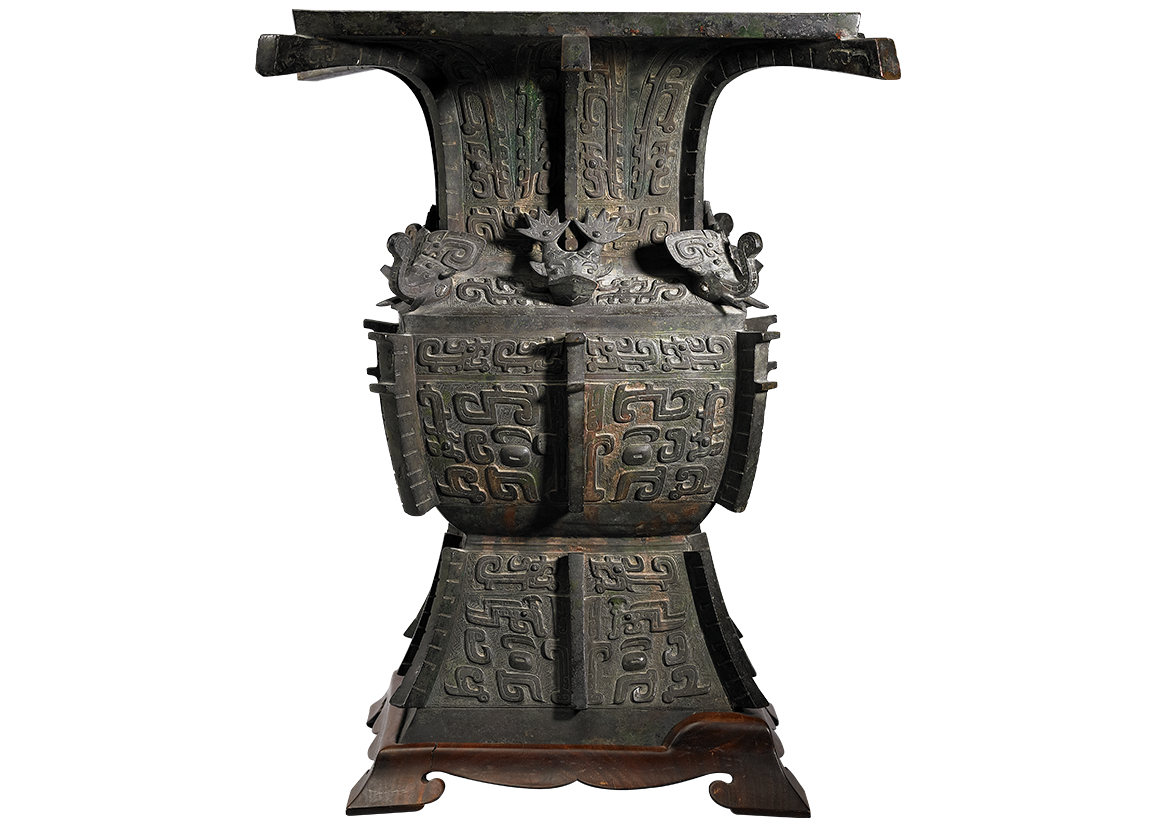Erudition Acquired from the Past
Bronze Assemblages Understood and Recreated
 Xi washing basin
Xi washing basin- Han dynasty (206 BCE-220 CE)
- Documented in Qinding Guozijian Zhi (Imperially Endorsed Records of the Guozijian), vol. 46, p. 16
 Animal-shaped zun wine vessel inlaid with malachite and turquoise
Animal-shaped zun wine vessel inlaid with malachite and turquoise- Mid-Warring States period (375-276 BCE)
- Documented in Qinding Guozijian Zhi (Imperially Endorsed Records of the Guozijian), vol. 46, p. 5
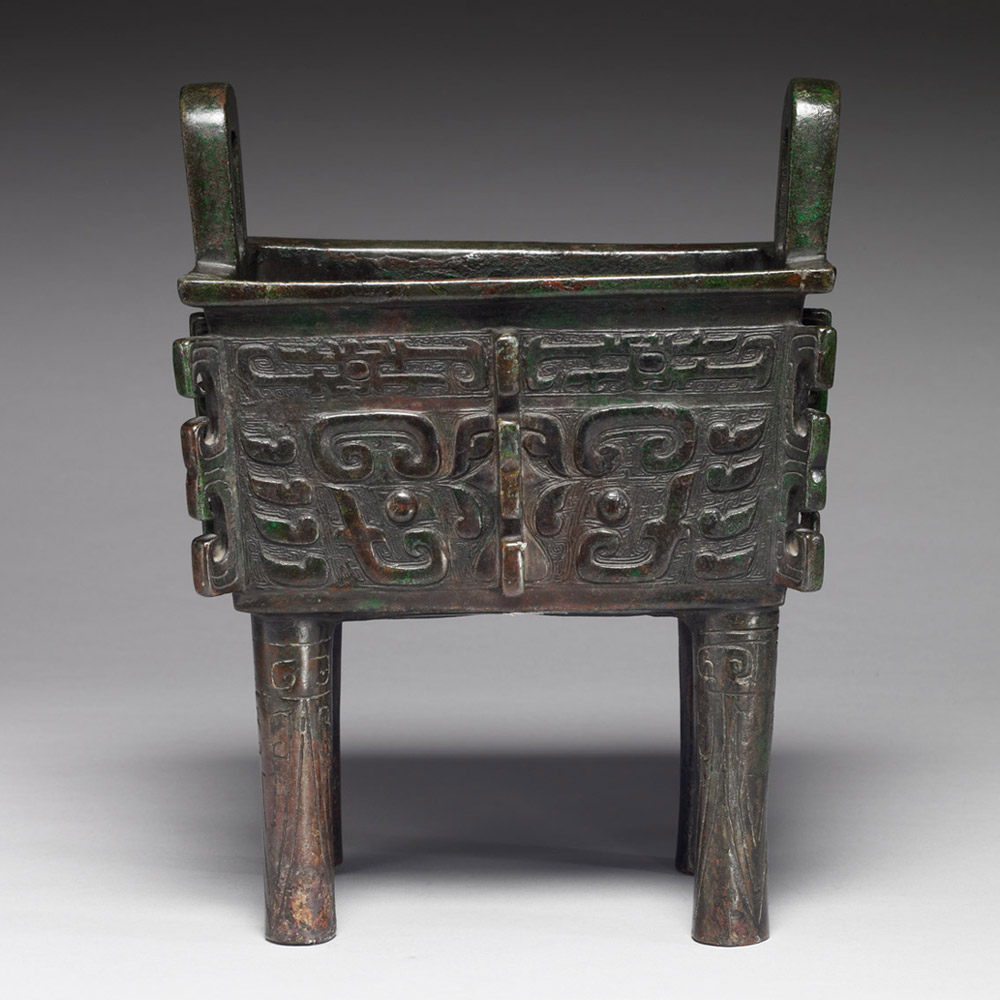 Square ding cauldron of the Marquis of Kang
Square ding cauldron of the Marquis of Kang- Early Western Zhou dynasty, c. 11th-10th century BCE
- Documented in Qinding Guozijian Zhi (Imperially Endorsed Records of the Guozijian), vol. 46, p. 3
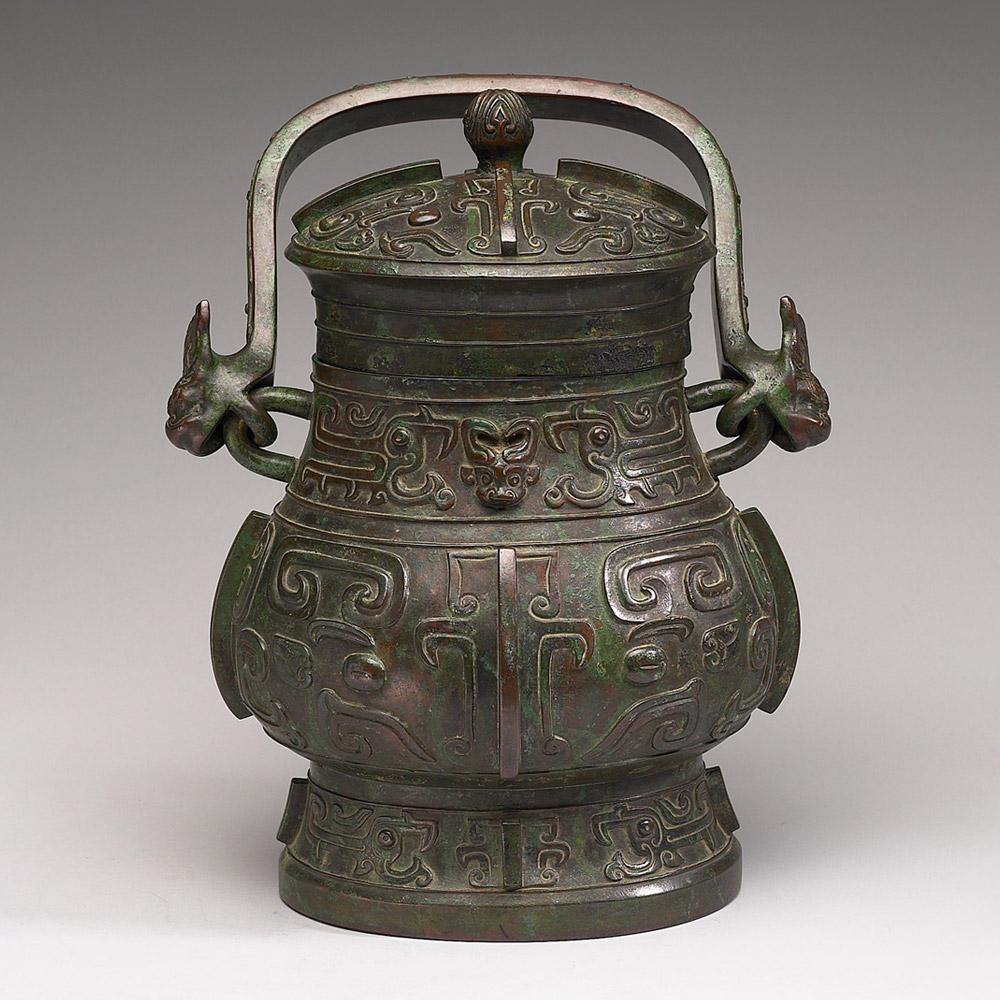 You wine vessel with swing handle of Nei-yan
You wine vessel with swing handle of Nei-yan- Southern Song to Ming dynasty, 12th-17th century
- Documented in Qinding Guozijian Zhi (Imperially Endorsed Records of the Guozijian), vol. 46, p. 6
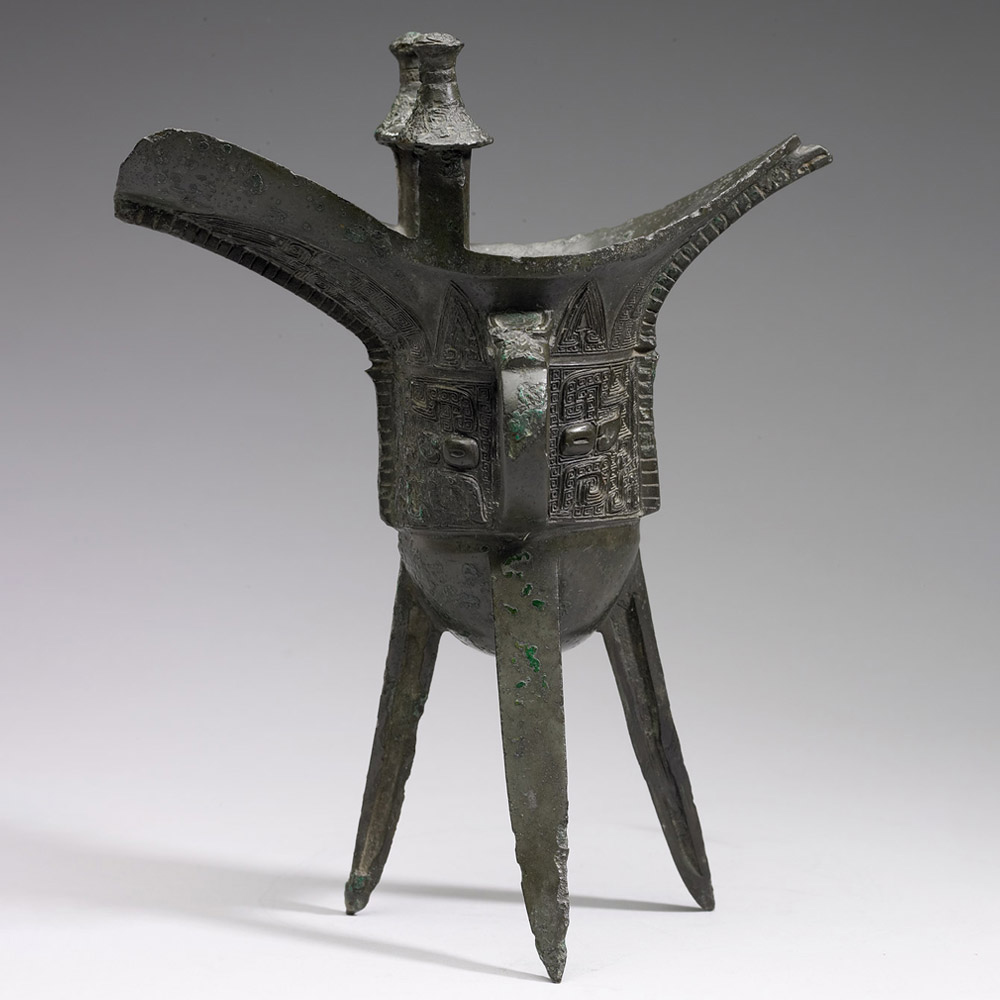 Jue wine vessel with Zi emblem
Jue wine vessel with Zi emblem- Late Shang dynasty, c. 13th-12th century BCE
- Documented in Qinding Guozijian Zhi (Imperially Endorsed Records of the Guozijian), vol. 46, p. 15
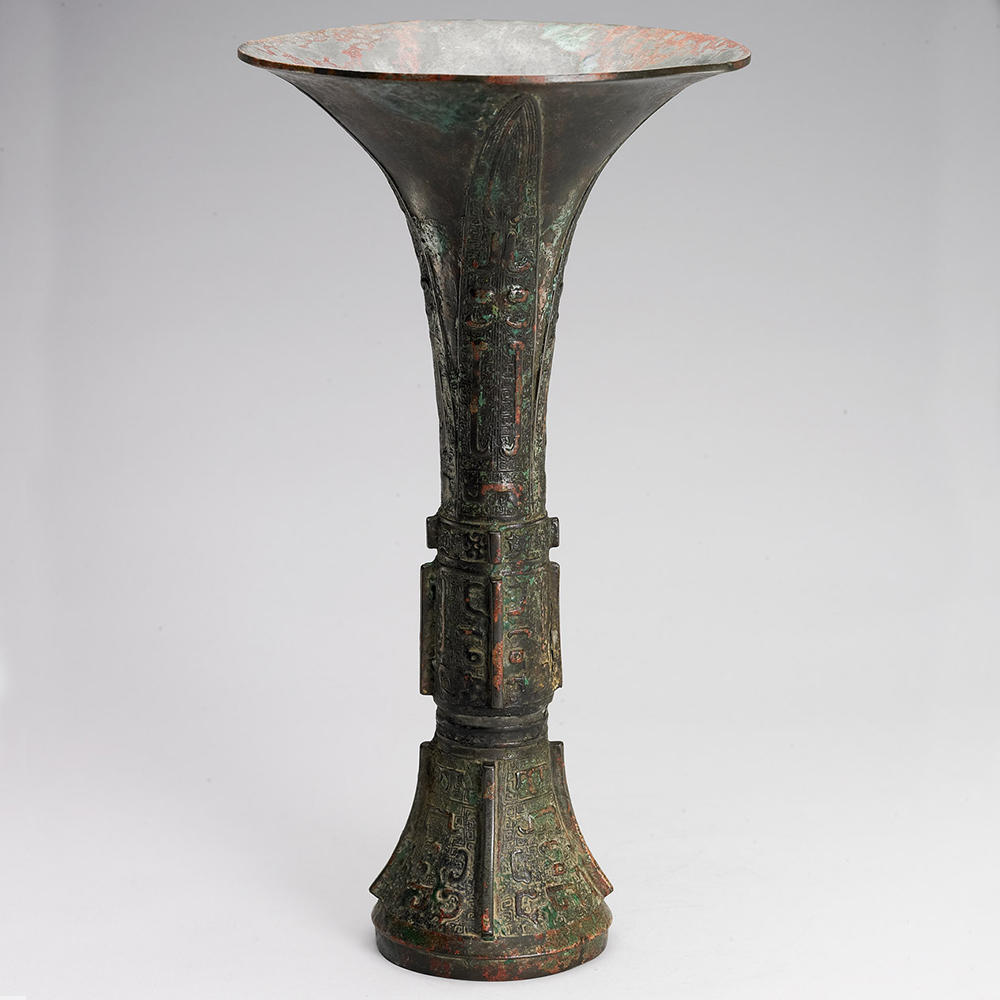 Gu wine beaker with animal mask design
Gu wine beaker with animal mask design- Southern Song to Ming dynasty, 12th-17th century
- Documented in Qinding Guozijian Zhi (Imperially Endorsed Records of the Guozijian), vol. 46, p. 14
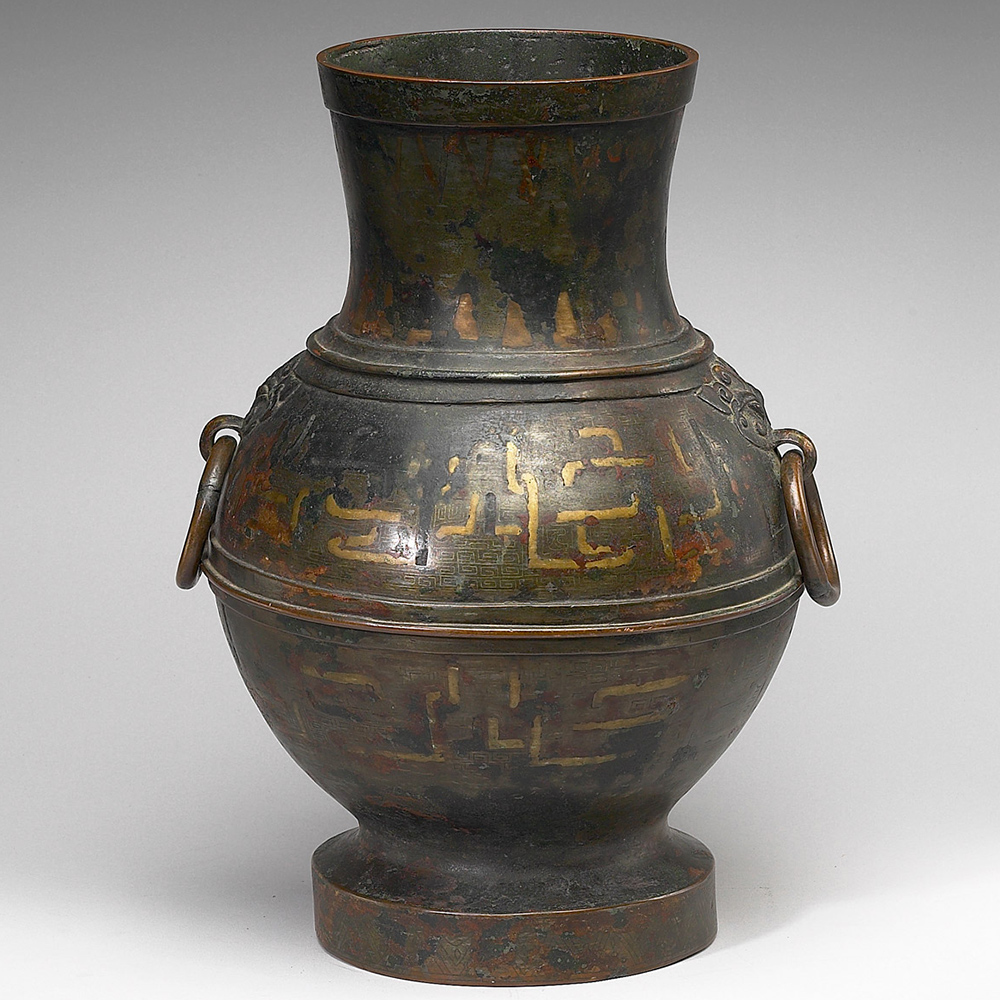 Gold and silver-inlaid hu jar with cloud décor
Gold and silver-inlaid hu jar with cloud décor- Southern Song to Ming dynasty, 12th-17th century
- Documented in Qinding Guozijian Zhi (Imperially Endorsed Records of the Guozijian), vol. 46, p. 9
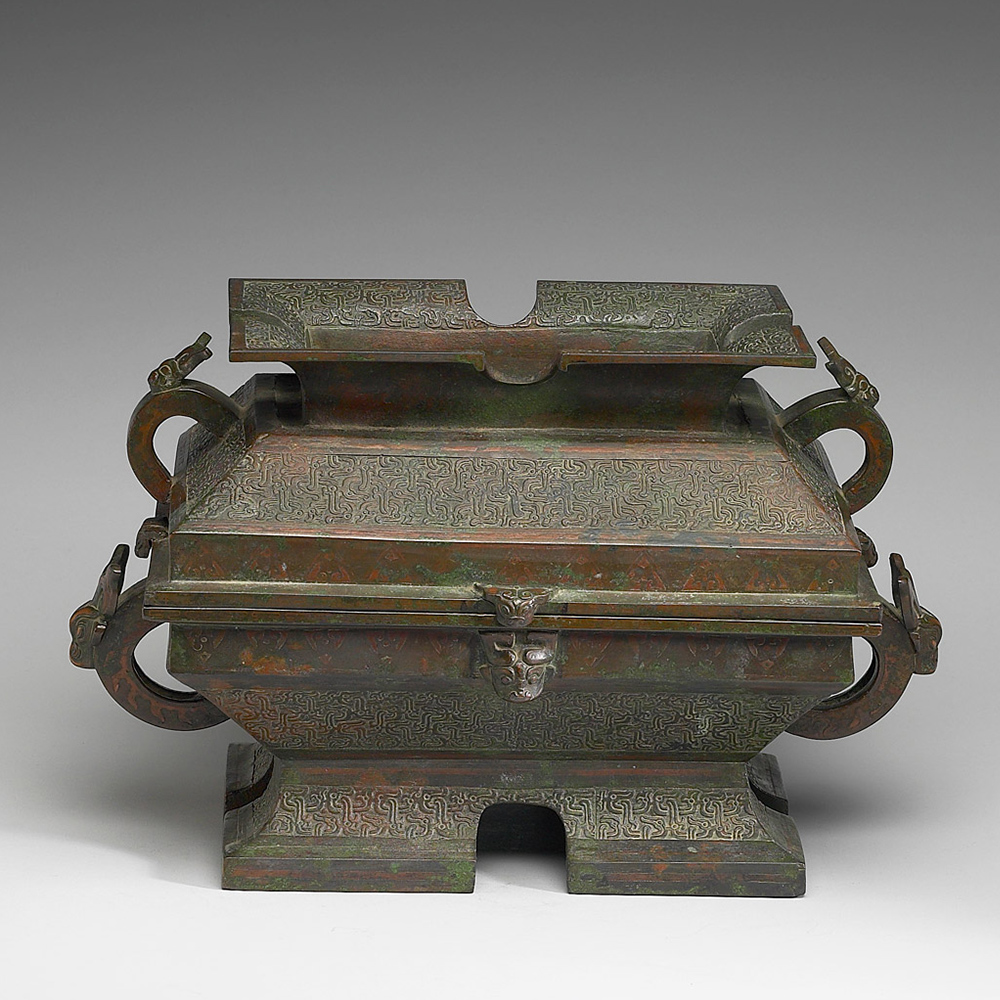 Fu rectangular grain vessel inlaid of Shao Zhong
Fu rectangular grain vessel inlaid of Shao Zhong- Southern Song to Ming dynasty, 12th-17th century
- Documented in Qinding Guozijian Zhi (Imperially Endorsed Records of the Guozijian), vol. 46, p. 10
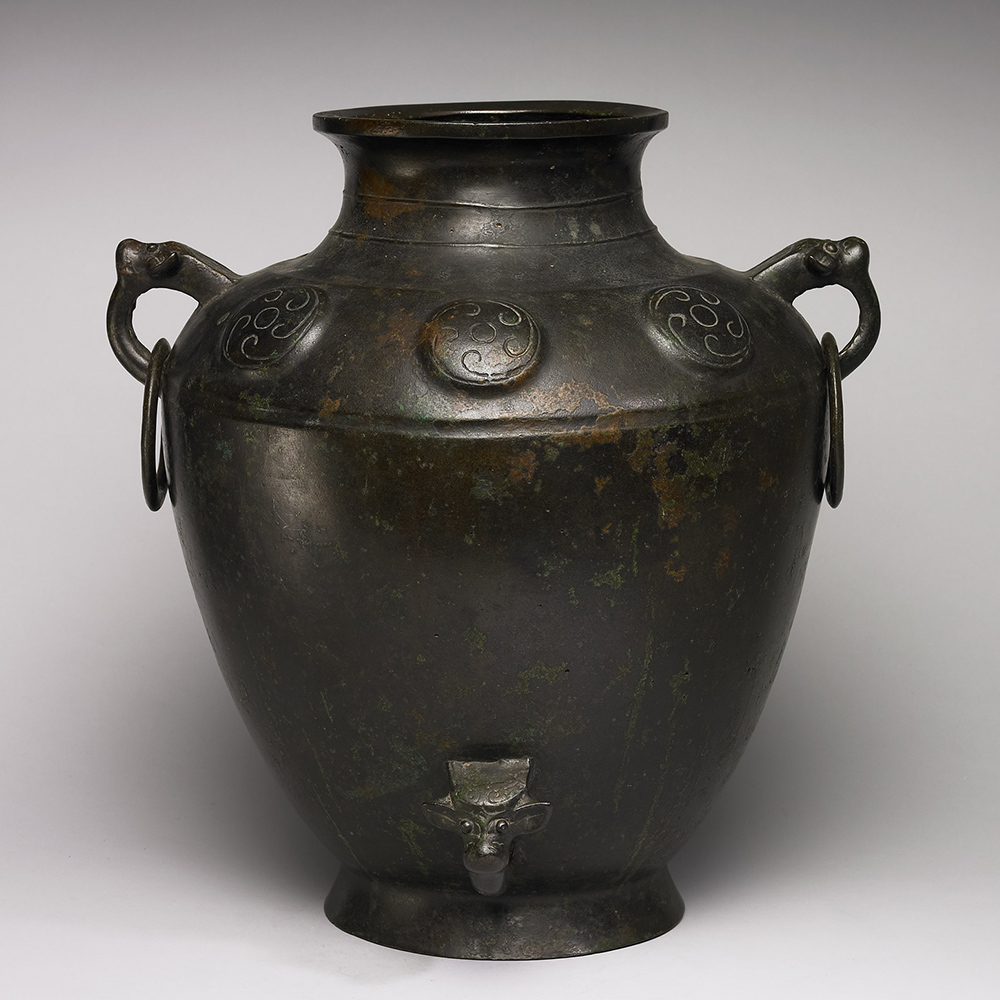 Lei wine vessel with whorl design
Lei wine vessel with whorl design- Late Shang to Early Western Zhou dynasty, c. 12th-10th century BCE
- Documented in Qinding Guozijian Zhi (Imperially Endorsed Records of the Guozijian), vol. 46, p. 8
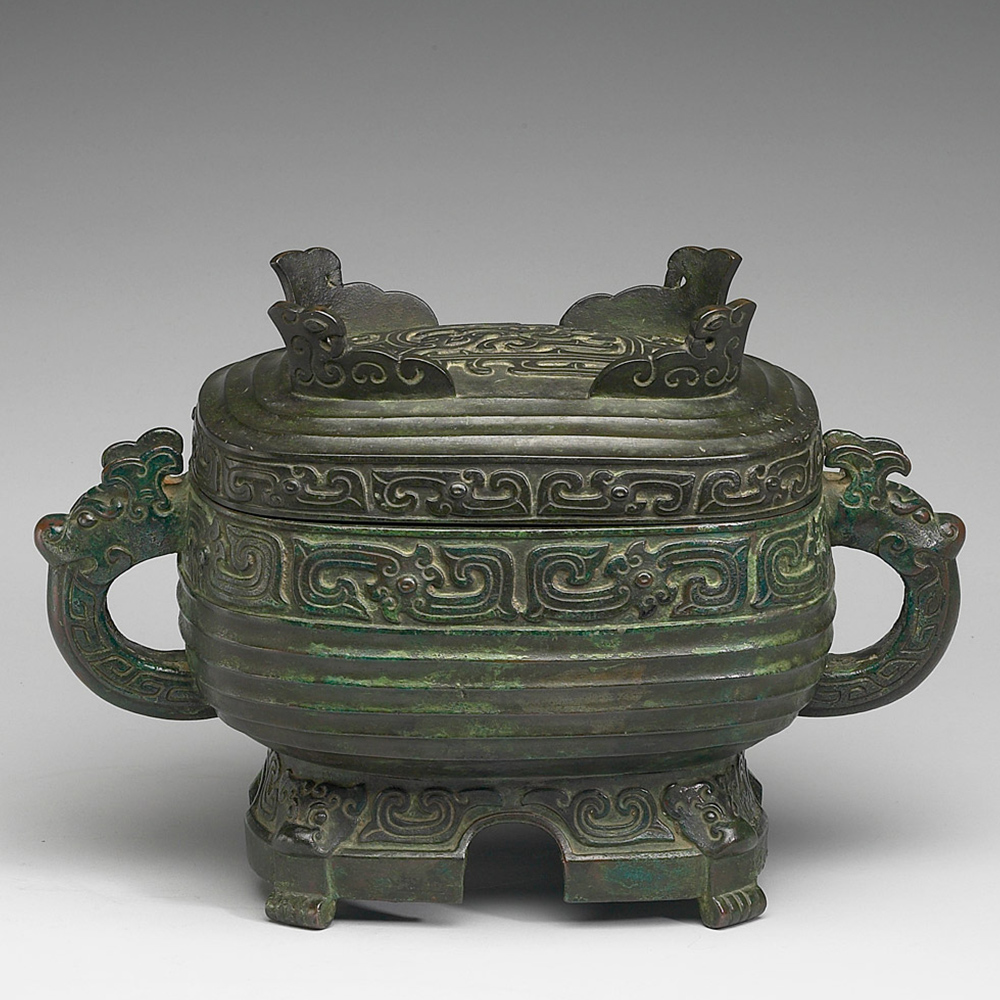 Gui food container of Grand Preceptor Wang
Gui food container of Grand Preceptor Wang- Southern Song to Ming dynasty, 12th-17th century
- Documented in Qinding Guozijian Zhi (Imperially Endorsed Records of the Guozijian), vol. 46, p. 12
" " is an emblem of a clan in the late Shang period, generally reading as "Ya Chou." More than a hundred bronze objects inscribed with Ya Chou emblem are extant, most of which documented in the illustrated catalogues of Emperor Qianlong. Several Ya Chou objects have been unearthed at Subutun, in Shandong province, where the Ya Chou clan cemetery was probably located. The highest-ranking tomb there might belong to a local military chieftain from the Shang.
" is an emblem of a clan in the late Shang period, generally reading as "Ya Chou." More than a hundred bronze objects inscribed with Ya Chou emblem are extant, most of which documented in the illustrated catalogues of Emperor Qianlong. Several Ya Chou objects have been unearthed at Subutun, in Shandong province, where the Ya Chou clan cemetery was probably located. The highest-ranking tomb there might belong to a local military chieftain from the Shang.
The Rui state was a polity ruled by a lineage of the Ji clan during the Zhou period. A Count of Rui was known for his assistance during the reign of King Kang of Zhou (1005/3-978 BCE). Based on inscriptions and stylistic features, a group of early Spring Autumn period (770-671 BCE) vessels, including ding, gui, hu, and chime bell, have been identified as objects commissioned by a Duke of Rui. The bronzes commissioned by Duke Huan of Rui, found in Liangdaicun, Hancheng, in Shaanxi province, however, belonged to his descendants.
- Ding cauldron of the Duke of Rui
- Early Spring and Autumn period, 770-671 BCE
- Documented in Xiqing Gujian (Illustrated Catalogue of the Xiqing Antiquities), vol. 2, p. 8
- Ding cauldron of the Duke of Rui
- Early Spring and Autumn period, 770-671 BCE
- Documented in Xiqing Gujian (Illustrated Catalogue of the Xiqing Antiquities), vol. 6, p. 1
- Gui food container of the Duke of Rui
- Early Spring and Autumn period, 770-671 BCE
- Documented in Xiqing Gujian (Illustrated Catalogue of the Xiqing Antiquities), vol. 27, p. 9
- Hu jar of the Duke of Rui
- Early Spring and Autumn period, 770-671 BCE
- Documented in Xiqing Gujian (Illustrated Catalogue of the Xiqing Antiquities), vol. 9, p. 4
- Chime bell of the Duke of Rui
- Early Spring and Autumn period, 770-671 BCE
- Documented in Xiqing Gujian (Illustrated Catalogue of the Xiqing Antiquities), vol. 36, p. 6
